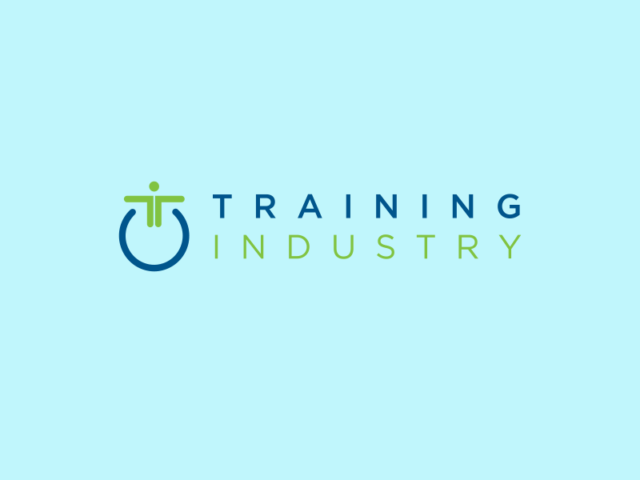Winning the Training Outcomes Race Through Impact and ROI
Originally contributed by Amara Hunt for TrainingIndustry.com.
Between The Great Resignation and the ongoing war for talent, the role of learning and development (L&D) has increasingly been in the spotlight over the past three years. When it’s effective, training’s impact extends far beyond compliance objectives; it plays a strategic role in attracting, engaging and developing talent and can directly contribute to overall business performance.

With the increased attention on L&D, we may be witnessing training’s heyday, but this increased attention also adds increased pressure to prove success. Regrettably, the burden of proof for training outcomes continues to fall on L&D professionals and training companies that are often forced to operate in a vacuum when it comes to metrics for success. What constitutes successful training outcomes is a question that requires input from multiple stakeholders before training has even begun. Those L&D professionals and training shops that get it right are the ones who will win the race for market share.
Often the level of clarity and alignment needed to measure outcomes is absent from initial scoping discussions. Without that clarity established upfront, the “outcomes horse” has left the barn, so to speak. This is why training frequently ends up being evaluated based on immediate feedback from learners about their reaction to the training and/or their immediate knowledge of what was presented. While this information can be interesting, it tells us precious little about impact or return on investment (ROI).
Whether explicitly stated or not, impact and ROI are the outcomes that businesses are most interested in and, in turn, what training organizations must be prepared to speak to if they want to capture their maximum market share. As a result, L&D professionals must be armed with the right questions to effectively measure these outcomes. In doing so, they will be well positioned to define success.
Below are three questions both L&D and training professionals should be asking to get the answers they need to win the training outcomes race.
What does success look like?
Stakeholders interested in training are often focused on needs as opposed to outcomes. For example: “Our meetings are disorganized and ineffective, so we need some support to improve them.” While this statement gives us guidance on some of the tactical needs, it doesn’t offer insight into outcomes. It is tempting to jump to solutions; however, this statement offers little direction on addressing the source of the issue.
The question “What does success look like?” forces stakeholders to think more critically about the future state and outcomes they would associate with success. A response to this question might sound something like, “Success would mean our team members come prepared to share insights, listen to one another and stay on topic.” Not only does this response offer more useful insights into learning outcomes, but also it lays the foundation to answer the next, more pointed question.
What are we measuring? Impact or ROI?
Businesses are fixated on the question of ROI and often use the concepts of ROI and impact interchangeably. But conflating ROI and impact further complicates an already challenging conversation. By clarifying the difference between these two terms, professionals will be better positioned demonstrate training outcomes.
Applying the most ubiquitous methodology for learning evaluation, The Kirkpatrick Model, we see that training can be evaluated across four levels.
Level 1: Reaction — How did the participants feel about the training?
Level 2: Learning — Did the participants learn from the training?
Level 3: Behavior — Did the training result in behavior change?
Level 4: Results — Did the training impact business performance?
When it comes to measuring outcomes, the easiest and most common way learning is evaluated is through reaction and learning. While both can be done in isolation through simple feedback forms or asynchronous quizzes, neither provide robust answers to questions pertaining to the kinds of outcomes businesses are truly interested in. Impact and results offer the more interesting insights from a business perspective.
Using The Kirkpatrick Model, if we think of impact in terms of behavior and ROI in terms of results, the question of outcomes immediately becomes more interesting — and more manageable. This differentiation is important because the type of training conducted will often determine the strength and ability to prove impact and/or ROI.
For example, it is easier to establish ROI for sales training than it is for communication training. The effectiveness of sales training can be clearly linked to sales performance in terms of dollars and cents, which can translate fairly easily to ROI. Conversely, soft skills training like communication is more difficult to link to ROI and instead may be better suited to measuring impact, which can in turn be linked to employee engagement.
While businesses are keen to see ROI, it’s important to recognize that some types of training don’t lend themselves to ROI, and that measuring impact offers a more insightful evaluation. By differentiating ROI from impact, you can guide the conversation toward what data is going to offer the strongest correlated value and, as a result, be the most meaningful.
How will we collaborate to measure training outcomes?
Determining metrics in terms of impact (behavior change) and/or ROI (business results) is dependent on the willingness of other stakeholders to collaborate. This question requires stakeholders to share the burden of proof, because these questions can’t be answered in isolation.
Whether measuring impact or ROI, there must be a willingness to share information that extends beyond the immediate learning. For example, if you are measuring the impact of training aimed at improving meetings, you can’t solely rely on the self-reporting of learners. You have to ask if there is a willingness to share data from peers, managers, external team members, performance management systems or any other macro data sources that behavior change might impact, such as employee engagement.
Similarly, if measuring ROI, there must be a willingness to share financial data. If measuring the ROI of sales training, data on individuals, teams and overall financial data may be required to accurately capture ROI. Alignment on what constitutes “investment” is also important in determining an ROI equation.
Collaboration is the key to measuring outcomes. Without active participation and a willingness to share necessary data, you may as well revert to measuring reaction and knowledge. Commitment to collaboration and information sharing must be a prerequisite of any agreement to measure impact or ROI.
It’s an exciting time to be in training. The business case for investing in training has never been stronger, and rapidly advancing technology gives us opportunities to reach even more stakeholders. We know that training is no longer a nice to have but a need to have to attract, retain and develop talent. In an increasingly competitive environment, proving the outcomes businesses are really interested in will continue to be a differentiator for both training vendors and L&D professionals. Whether measuring impact or ROI, make sure you’re asking the right questions upfront, and you’ll be better positioned to win.


